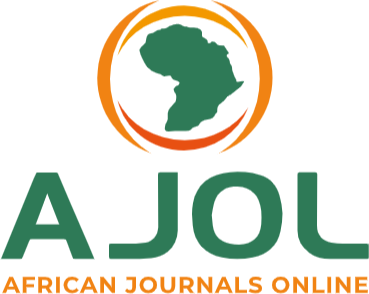Synthetic Approaches, Classification, Properties and Application of Metal-Organic Frameworks: A Review
Keywords:
Metal–organic frameworks (MOFs); Synthetic methods, Classification, Applications of MOFsAbstract
Metal-organic (MOF) is a group compound that consists of an ion or metal group coordinated by organic ligands to make many-dimensional structures. MOFs are subclassed by coordinated polymers with speciality porous structures. The pursuit of rapid development in the area of catalysis, solar energy, environmental remediation, wastewater treatment and other aspects of ecological and sustainable chemistry has prompted substantial research by material chemists, physicists, academics and other scientists for the development of porous material. A lot of energy had been invested in this course by scientists, research organizations and public sector agencies from antiquity, but the resulting solution was somewhat undesirable until two decades ago when Metal-Organic Frameworks (MOFs) appeared to offer a glimpse of a solution to those challenging issues. The adaptability, flexibility, uniqueness and usability of the metal-organic frameworks material, and its suitability to every facet of scientific and technological advancement has since triggered an incredible upsurge in studies aimed at uncovering more of the inherent influential properties of the materials, and its improvement for the betterment of material science and research world. This review is aimed at investigating some of the recent advancements/breakthroughs in metal-organic frameworks, synthetic methodologies and applications.
Downloads
Published
Issue
Section
Similar Articles
- Vincent Oseikhuemen Odia-Oseghale, Joseph Odion Odia-Oseghale, Environmental Implications of Quarrying and Waste Management: A Case Study of Okhoro, Benin City , Communication In Physical Sciences: Vol. 12 No. 4 (2025): VOLUME1 2 ISSUE 4
- Hauwa, I. Muhammad, Monday Musah, Sheriff Abdulfatai, Heavy Metal Concentrations in Various Species of Onion Bulbs in (Allium Spp.) Lapai Market, Niger State, Nigeria , Communication In Physical Sciences: Vol. 7 No. 2 (2021): VOLUME 7 ISSUE 2
- Onanuga Omotayo Aina, Titus Morrawa Ryaghan, Bello Musa Opeyemi, Momoh Daniel Clement, Goat Horn Biochar as a Low-Cost Adsorbent for the Removal of Cadmium and Zinc ions in Aqueous Solution , Communication In Physical Sciences: Vol. 10 No. 3 (2023): VOLUME 10 ISSUE 3 (2023-2024)
- Emeka C. Ogoko, Water Quality Assessment of Dug Wells in Lagos Island, Southwestern Nigeria , Communication In Physical Sciences: Vol. 4 No. 2 (2019): VOLUME 4 ISSUE 2
- Idayat Abubakar Salau, Aminu Suleiman Mohammed, Hussaini Garba Dikko, Type I Half-Logistic Exponentiated Kumaraswamy Distribution With Applications , Communication In Physical Sciences: Vol. 12 No. 2 (2025): VOLUME 12 ISSUE 2
- Irene Edem Johncross, Fanifosi Seyi Josiah, Abidemi Obatoyinbo Ajayi, Resource recovery from Sugar Cane Biomass for the Synthesis of Silicon Nanoparticles , Communication In Physical Sciences: Vol. 12 No. 1 (2024): VOLUME 12 ISSUE 1
- Patricia Ese Umoru, Femi Emmanuel Awe, Joseph Ifeanyi Uche, Oluwayemi Abiodun Babatunde, Ibrahim Aliyu Salaha, Investigation of the Adsorptive And Inhibitive Properties Of Cucurbita Maxima Peel Extract And Halide Ions As Inhibitors For Stainless Steel in 1m H2so4 Solution , Communication In Physical Sciences: Vol. 10 No. 2 (2023): VOLUME 10 ISSUE 2
- Ikenna Duruanyim, Emmanuel Victory Enyinnaya, Ifiok Dominic Ufia, Okoi Ina (Jnr.) Utum, Ayinya Johnathan Attah, Assessment of Resistance of Selected Nigerian Wood Species Treated with Rocket Fungicide and Mimosa pudica Linn. extracts against fungal infestation. , Communication In Physical Sciences: Vol. 12 No. 4 (2025): VOLUME1 2 ISSUE 4
- Uduak Bassey Essien, Magdalene E. Ikpi, Alexander I Ikeuba, Nsikak Bassey Essien, Experimental and Computational Chemistry Investigations of Tartaric acid as a Green Corrosion Inhibitor for API 5L X 52 Carbon Steel in 0.5 M HCl , Communication In Physical Sciences: Vol. 7 No. 4 (2021): VOLUME 7 ISSUE 4
- Buhari Aminu Balesa, Abdullahi Lawal, Saddiq Abubakar Dalhatu, Bala Idris, Mustapha Bello, First Principles Calculations of Structural, Electronic and Optical Properties of Nitrogen-Doped Titanium Dioxide for Solar Cells Application , Communication In Physical Sciences: Vol. 7 No. 4 (2021): VOLUME 7 ISSUE 4
You may also start an advanced similarity search for this article.




